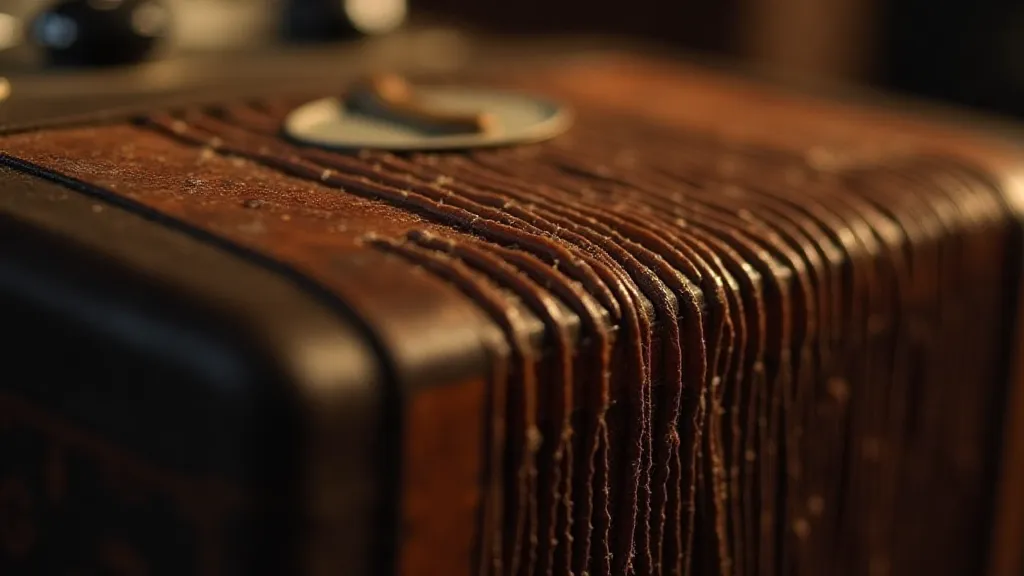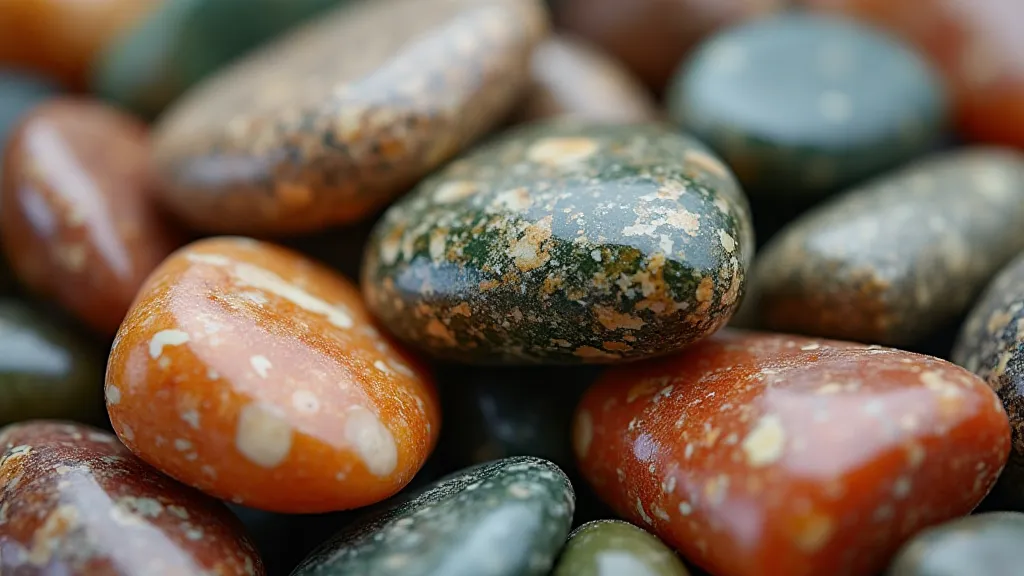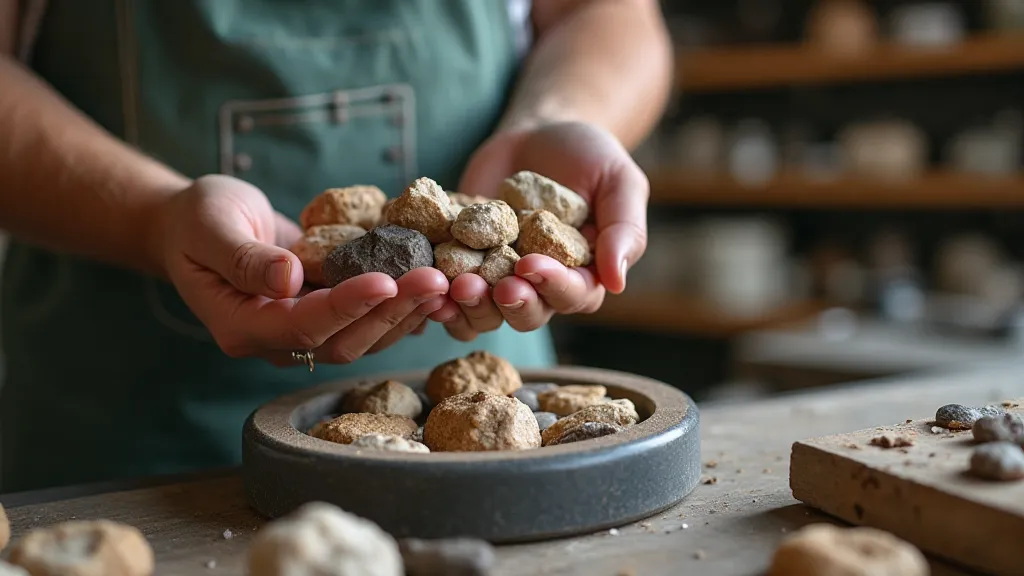The Tumbler's Rhythm: A Beginner’s Guide to Geological Choreography
There’s a peculiar, almost meditative quality to watching a rock tumbler at work. It's a low hum, a constant rotation, a patient process of transformation. It reminds me of my grandfather’s antique accordion. He’s gone now, but I can still hear the wheezing, soulful music he coaxed from its bellows, the delicate interplay of keys and reeds meticulously adjusted over decades. That accordion, like a rough-hewn stone, had been through a lot. Its once vibrant colours were faded, its leather cracked, but its music, when he played, was more beautiful than ever. Tumbling rocks, I've come to realize, mirror that process of refinement. It's geological choreography, a slow, persistent dance that reveals hidden beauty.
The idea of tumbling rocks initially seemed almost…too simple. A barrel, some rocks, a slurry of grit, and time. But the longer I’m involved, the more I appreciate the elegance of it. There's a certain poetry in watching something inherently unyielding—a chunk of granite or jasper—yielding to gentle, repetitive action. It’s a reminder that even the most stubborn challenges can be overcome with persistence and a little bit of understanding.

Getting Started: Your First Tumbling Barrel
The first step is, naturally, acquiring a tumbling barrel. These come in various sizes, and the size you choose depends on the scale of your ambitions. Smaller barrels (3-4 inches) are ideal for beginners, allowing you to experiment with smaller batches and different rock types. Larger barrels (6-8 inches) can handle more material, but require more grit and take longer to complete a cycle.
Don't be tempted to buy the cheapest barrel you can find. A well-made barrel, often made of sturdy plastic or even lined with rubber, will last for years and provide more consistent results. The barrel's design matters too; some have better sealing mechanisms to prevent grit from escaping.
The Grit Cycle: A Patient Progression
The heart of the tumbling process lies in the grit cycle. This isn’t a one-step affair; it’s a carefully sequenced progression of abrasive materials, each designed to remove a specific level of imperfection. Typically, a grit cycle consists of four stages:
- Stage 1: Coarse Grit (60/90): This is the workhorse of the process, tackling the biggest flaws—sharp edges, rough surfaces, and fractures. Expect this stage to take anywhere from 7 to 14 days, depending on the hardness of your rocks.
- Stage 2: Medium Grit (120/180): This stage refines the surfaces further, smoothing out the marks left by the coarse grit. Expect this stage to take around 5-7 days.
- Stage 3: Fine Grit (220/280): This is where the rocks start to take on a polished sheen. Expect this stage to take 3-5 days.
- Stage 4: Pre-Polish (500): This stage prepares the surface for the final polish, removing any remaining fine scratches. Takes about 3-4 days.
Choosing Your Stones: A Geologist’s Palette
Not all rocks tumble equally well. Softer stones like agate, jasper, and petrified wood are excellent choices for beginners. Harder stones like granite and obsidian can be more challenging and may require longer tumbling times. Avoid stones that are significantly different in hardness within a batch; this can lead to uneven tumbling. Understanding the geological story behind the stones you choose can be incredibly rewarding; exploring the geologist's quill can unlock deeper insights into their origins and formations.
Consider the colours and patterns you want to achieve. Agate, for example, often reveals stunning banding and inclusions during the tumbling process. Jasper can display a wide range of colours and textures, from vibrant reds and yellows to subtle greens and blues. The possibilities are almost endless.
Remember, the beauty of rock tumbling isn’t just about the final result. It’s about the journey, the transformation. It’s about understanding how the seemingly immutable landscape shapes and alters over time, layer by layer.

The Importance of Fillers and Plastic Polish
To ensure even tumbling and prevent damage to your rocks, it’s essential to use fillers. These small, inert materials (like plastic beads or ceramic pellets) fill the empty space in the barrel, creating a cushioning effect and helping to distribute the tumbling action evenly. The barrel should be about two-thirds to three-quarters full.
After the grit cycle is complete, a final stage of plastic polish is applied. This helps to remove any remaining scratches and bring out the full brilliance of the polished stones. Some people prefer a hand polish, using a felt wheel and polishing compound, for an even higher level of shine, but plastic polish is usually adequate for most hobbyists.
Beyond Tumbling: Exploring Lapidary Arts
Rock tumbling is just the beginning. The world of lapidary is vast, encompassing various techniques for shaping and transforming stones. The ability to manipulate and enhance the natural beauty of these materials has fascinated humans for millennia. For those seeking to combine gemstones with artistic metalwork, delving into a gemsmith's alchemy can reveal the secrets of jewelry creation.
Understanding Color and Formation
The mesmerizing hues you see within many tumbled stones aren’t random. They are a result of complex chemical processes occurring within the Earth. The interplay of trace elements and geological events dictates the range of colors you find in agate, jasper, and other rocks. Learning to interpret these colors can provide a window into the Earth's history. If you're curious about the language of these mineral colors, learning about chromatic whispers can offer intriguing explanations.
A Craft Resonating Through Time
Thinking about my grandfather’s accordion, I realize that both processes share a common thread: patience and a deep respect for the materials involved. He spent years meticulously restoring his instrument, understanding its intricacies, coaxing its music back to life. Similarly, tumbling rocks requires understanding the properties of the stones, respecting their inherent hardness, and allowing them the time they need to transform.
Rock tumbling isn’t just a hobby; it’s a connection to the Earth, a glimpse into the slow, relentless forces that shape our planet. It’s a chance to witness a small-scale version of geological time, a reminder that beauty can emerge from the most unexpected places. And much like the heartfelt music that flowed from my grandfather’s aging accordion, the polished stones you create will be a testament to your patience, your skill, and your appreciation for the enduring power of nature.

The Collector’s Perspective
Many rock tumblers eventually evolve into dedicated collectors, assembling impressive libraries of polished stones, each with its own unique story to tell. Careful cataloging and preservation become essential aspects of this pursuit. For those captivated by this aspect, studying the collector's codex offers valuable insights into organizing and appreciating a mineral library.
Resources for Continued Learning
The world of lapidary and rockhounding is vast and ever-evolving. There are countless resources available for those who wish to delve deeper into the subject. Local rock and mineral clubs are a great way to connect with experienced hobbyists and learn from their expertise. Online forums and communities offer a wealth of information and support. And of course, there are numerous books and videos that cover every aspect of rock tumbling, from basic techniques to advanced projects.





